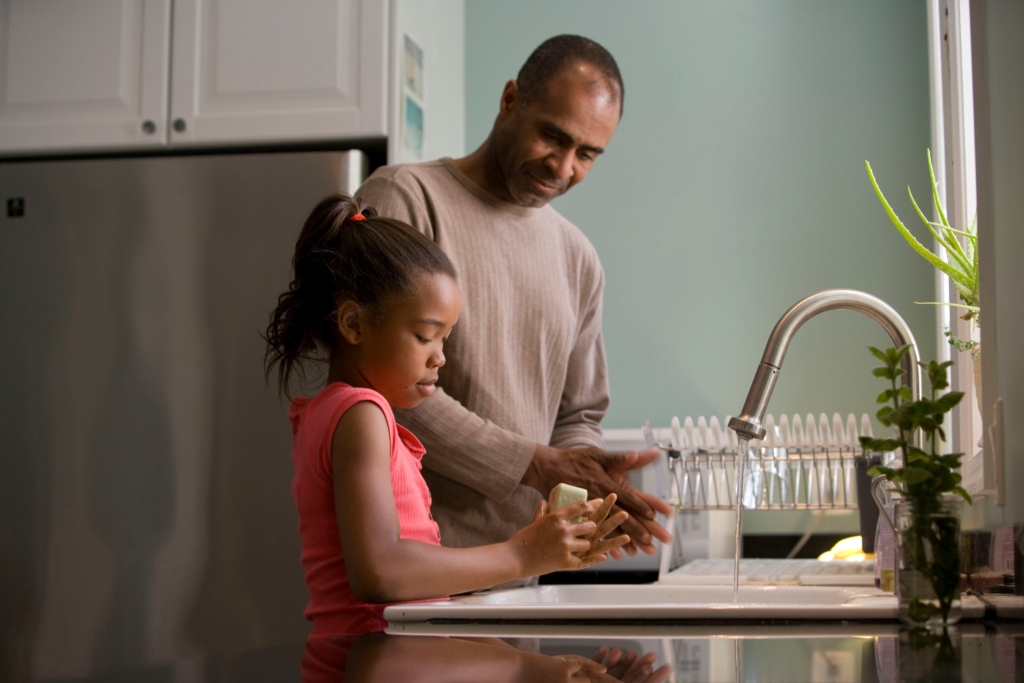Between showers, laundry, and watering our lawns, we all use a significant amount of water. The standard American family uses more than 300 gallons of water per day, which equates to 80 to 100 gallons per person. Furthermore, 30 to 60% of domestic drinking water goes to water yards and gardens, and more often than not, copious amounts of water are wasted by over-watering, evaporation, and misdirected sprinklers that end up watering sidewalks and driveways rather than our actual lawns.
Why We Need to Conserve Water
You might be wondering, “Well, why is this a problem? Isn’t water renewable?” While it is true that 71% of the earth is covered in water, conserving this precious resource is of utmost importance. This is because such a small percentage of all the water on Earth is fit for consumption, despite our booming population.
- 97% of all water on the earth is salt water, which is not potable.
- Only 3% of water on Earth is fresh water, and only 0.5% is available for drinking.
- The remaining 2.5% of fresh water is locked in ice caps, glaciers, the atmosphere, soil, or under the earth’s surface, or is too polluted for consumption.
4 Areas Where You Can Conserve Water in the Home
Luckily, there are so many easy ways to save water around the house that can help minimize your environmental impact. First, to find out how much water you’re actually using on a daily basis, you can use this handy calculator from the USGS. After you figure out how much water you use daily in your home, check out some of our favorite tips below on how you can reduce your water consumption throughout your entire home.
In the Bathroom
● Install low-flow showerheads.
- Conventional showerheads use 5-7 gallons of water per minute. If you’re averaging a 10-minute shower, switching your showerhead to a low-flow can save you around 15 gallons of water. An 8-minute shower with a low-flow showerhead uses about 12 gallons of water, 1.5 gallons per minute.
Inexpensive water-saving low-flow showerheads are relatively easy to install. You can also use your Ecogold Rewards credits to redeem one via the Ecogold portal, along with other energy-efficient gadgets (such as some of the ones we’ll discuss below).
● Install low-flow faucet aerators and low-flow toilets.
- Low-flow faucet aerators can be attached to most existing faucets and use less than 1.5 gallons of water per minute, whereas older faucets use between 3 and 7 gallons per minute. Similarly, using ultra low–flow toilets could cut indoor water use by as much as 20%.
● Turn off the faucet when brushing your teeth, washing your hands, or shaving.
- You may be surprised to learn that a running faucet flows about 2 gallons of water per minute. If you wash your hands 7 times per day for 20-30 seconds, you’ll use roughly 7.7 gallons of water.
● Take shorter showers or opt for a bath.
- Showering accounts for almost 17% of household indoor water use, so simply taking shorter showers will save gallons of water. You can use a kitchen timer to time your showers and keep them under 5 minutes if possible.
● Fix any leaks (this applies to leaks throughout your entire home as well).
- A slow drip from a leaking faucet can waste as much as 20 gallons of water a day and a leaky toilet can waste 200 gallons a day.
In the Kitchen
● Opt for the dishwasher rather than hand-washing dishes.
- Washing dishes by hand uses a lot more water than running the dishwasher, especially if you have a water conserving model dishwasher. The EPA estimates an efficient dishwasher uses half as much water, saving close to 5,000 gallons each year.
● If washing dishes by hand, don’t leave the water running for rinsing.
- If you have a double-basin sink, fill one side with soapy water and one with rinse water. If you have a single-basin sink, gather washed dishes in a dish rack and rinse them with a spray bottle or a pan full of hot water.
● Fill your dishwasher.
- Your dishwasher requires the same amount of water whether it’s full of dishes or just partially full, so be sure to fill it prior to running a load. Some dishwashers even have a water-saver cycle so use that if available to save even more water.
● Defrost food in the refrigerator.
- Instead of running water over frozen food to defrost, plan ahead to thaw it in the refrigerator or microwave oven.
In the Laundry
● Only run your washing machine when you have a full load of laundry.
- This chore accounts for more than 20% of residential indoor water use. Indeed, the average American family washes about 300 loads of laundry each year.
● Select the proper water level for laundry.
- Did you know that you can control the amount of water used by your clothes washers? Just select the proper water level for each load of laundry.
Outside
● Adjust Your Sprinklers.
- Do this to make sure your sprinklers are watering your lawn and garden, and not the street and sidewalk.
● Harvest Rainwater.
- This process is incredibly simple and is one of the oldest methods of watering, or saving water. Collecting rainwater from your gutters is a great way to recycle your water.
● Replace lawn area with imitation grass.
- Ornamental grasses and low water use plants aren’t just easier to maintain than turf and require less water, but they’re also aesthetically pleasing.
- Ground moss plants serve as a fine alternative ground cover since they receive the moisture and essential nutrients they need for growth from the air. If these don’t sound appealing to you, there are other options such as artificial turf, or even yards with rock landscaping, that require no water at all.
- For more tips, on saving water in your outdoor space, check out our blog post How to Conserve Water on Your Lawn
Learn What Else You Can Do to Contribute to the Planet’s Health
As you’ve hopefully learned in this post, water conservation is extremely important and there are many ways you can cut your consumption of this valuable resource. These tips are intended to help motivate you to live a more sustainable lifestyle. Visit Spring Power & Gas to learn about more ways that you can contribute to a brighter future for our planet.


